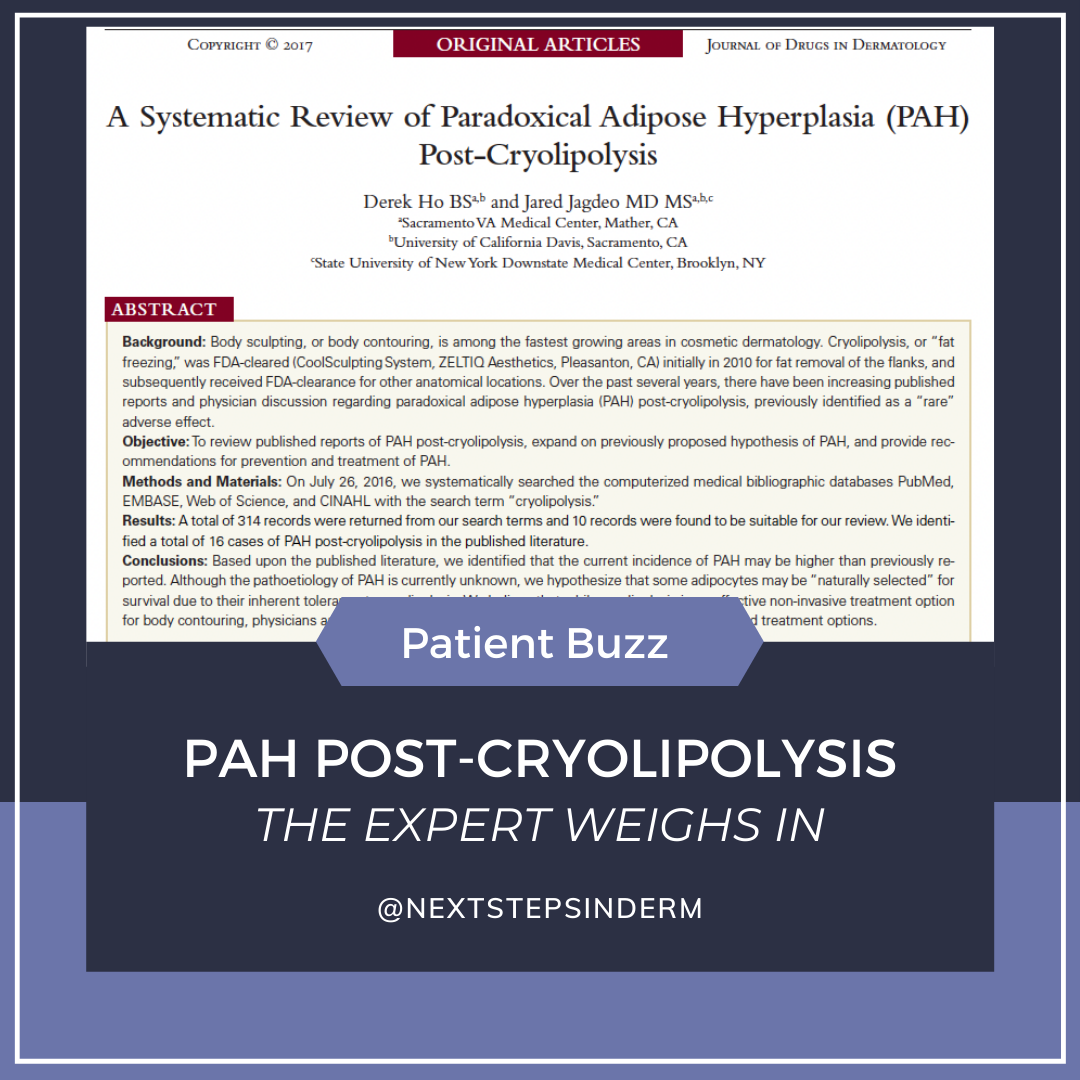SELF magazine recently covered supermodel Linda Evangelista’s recent admission that she developed paradoxical adipose hyperplasia (PAH) after undergoing cryolipolysis. The article mentions a 2017 Journal of Drugs in Dermatology review that found the incidence of PAH post-cryolipolysis may be higher than previously reported.
I reached out to one of the authors of the review, Jared Jagdeo, MD, MS, associate professor of dermatology at SUNY Downstate Medical Center, and founding director of the Laser, Aesthetics and Body Institute and the Center for Photomedicine. Dr. Jagdeo provides his take on the topic four years after his review was published as well as his guidance for how dermatologists should counsel their cryolipolysis patients.
What led you and your co-author to write the 2017 review about PAH post-cryolipolysis?
I had attended several conferences and heard from colleagues that they had seen numerous cases of PAH. We reviewed the literature comprehensively to help share the available data on PAH in a concise, aggregated manner. We believe, based upon the professional findings by colleagues, that PAH is a concerning, underreported potential adverse effect of cryolipolysis that our colleagues and patients should be aware of.
Your review found that the incidence of PAH post-cryolipolysis may be higher than previously reported. Has recent research borne that to be true? What do we know now about the prevalence of PAH that we didn’t know when you conducted your review?
Yes, we and other researchers have found that PAH may represent a common adverse event, and may occur as often in 1 per every 100 patients that undergo cryolipolysis.
What are the latest theories of why PAH occurs, and what can be done during cryolipolysis to mitigate it?
There are several hypotheses as to why cryolipolysis-induced PAH occurs. Unfortunately, to my understanding, there has been limited research done to evaluate why cryolipolysis-induced PAH occurs. To my understanding, nothing can be done during cryolipolysis to mitigate the risk of PAH.
Is there any research on PAH that’s especially helpful for dermatologists who perform cryolipolysis to keep in mind, such as people groups who are more likely to experience PAH?
The data demonstrates that men are more likely to experience PAH. Unfortunately, PAH is underreported, especially in patients who may feel self-conscious, and this may mask our understanding of if there are any demographic relationships associated with cryolipolysis and PAH.
How should dermatologists counsel their cryolipolysis patients?
Dermatologists should counsel all patients on the possible risk of PAH and the associated classic treatment for PAH, which is liposuction.
Did you enjoy this article? You can find more Patient Buzz expert commentaries here.

